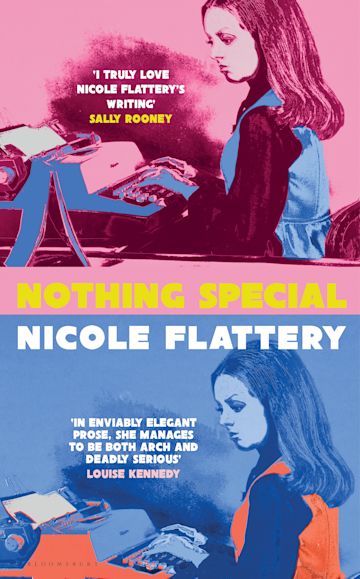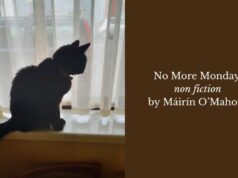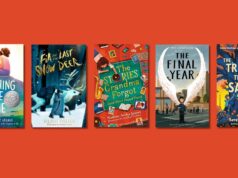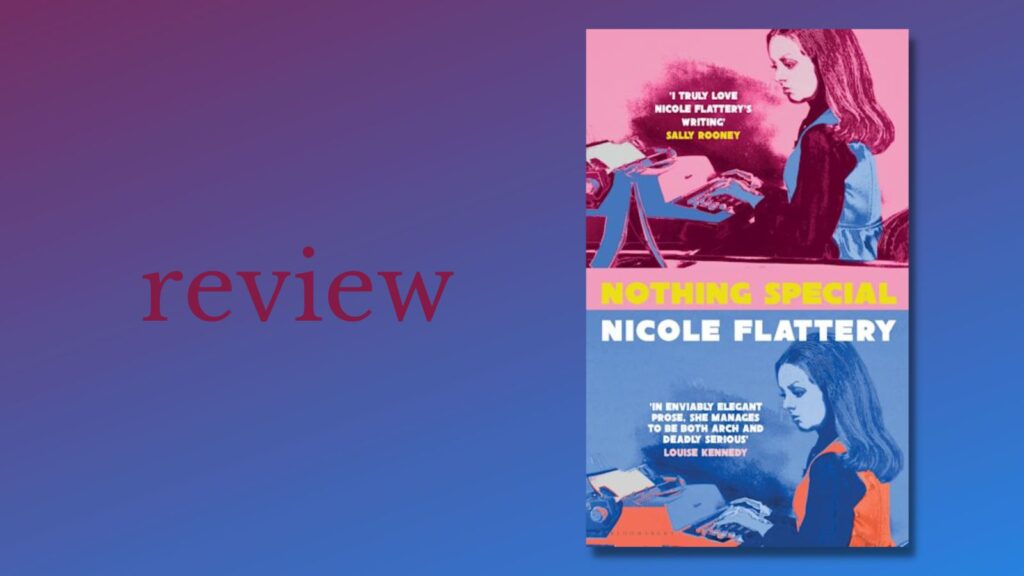
Nothing Special|Nicole Flattery|Bloomsbury
Flattery has a way of making us look at the world we know out of the corner of our eye
by Eoghan Smith
It was always going to be interesting to see what Nicole Flattery did after Show Them A Good Time, her brilliant first collection of short stories. In her depictions of disenfranchisement, Flattery demonstrated a memorable talent for being hilarious and disturbing, off-kilter and on point.
Her writing punctures expectations of sex, relationships, work, art – in short, the demands of contemporary life – and the insistencies of capitalism. Her characters drift into roles not necessarily of their choosing. A general air of dissatisfaction with the state of affairs pervades her work, which is distilled through a prose style that is observant, witty and intellectually exacting.
Familiar brushstrokes
These familiar brushstrokes are present in her debut novel, Nothing Special, yet here we are not in the contemporary moment. We are instead taken back to the mid-1960s, to New York and, specifically, to The Factory, pop-artist Andy Warhol’s famous Manhattan studio that was the centre of his creative output. Here, Warhol produced films, prints, paintings, books, pieces of sculpture, and much more besides.
This setting makes perfect sense for a writer so attuned to how our image-saturated culture shapes the anxieties of modern self-perception. But – thankfully – Flattery is not interested in adding to the Warhol myth. In fact, her eye hardly falls at all on Warhol, nor on the celebrities, artists, actors and hangers-on that populated The Factory, though we get glimpses of them, but instead on two young women who worked as typists for Warhol.
Irony and world-weariness
Nothing Special is grounded in fact: in 1965, Warhol employed four young women to type up verbatim conversations between himself and the actor Robert Olivo, who styled himself Ondine. The narrative focuses on one of these girls, seventeen-year-old Mae, a dropout living with her alcoholic mother and her mother’s boyfriend Mikey. (Flattery has changed the names of the real women). A lonely girl with only one friend, Mae spends her days riding escalators until – after a series of events involving a one-night stand and a referral to a psychiatrist by her erstwhile lover’s mother – she is offered a job as one of Warhol’s typists.
These early scenes are handled deftly by Flattery, with precise irony, astute characterisation and dollops of world-weariness as Mae moves clumsily into an exploitative and predatory world of young adulthood.
Flattery is also excellent at conjuring up New York in the 1960s, at least how it has been refracted to us through visual and literary cultures. John Banville once remarked of Prague that he was disappointed to find when he went to that city that his prior impression of the city exactly matched the reality.
If Nothing Special genuinely feels like an American novel, it is perhaps because decades of immersion in American popular culture has made us all permanent inhabitants of its artistic imaginary.
Male-ordered art project
Mae’s job, along with another typist, Shelley, is to transcribe the conversations between Warhol and Ondine. These pages, replete with all their errors – for Warhol insisted on keeping them in – were then published as a, A Novel. This fragmented work – the term ‘novel’ is a stretch, even for a work self-consciously responding to Ulysses – is described by Flattery in a note on her sources as ‘fascinating, stubborn and enduring’. The poet Paul Carroll was less complimentary, describing it as consisting of:
“451 pages of totally unedited manuscript transcribed from tapes Warhol made as he followed Ondine for 24 hours as he gossiped, quarreled, wooed and talked with friends, lovers, enemies, waitresses and cabdrivers. At first, a strikes most as a bore. Most of the time you can’t tell who is talking to whom about what; moreover, all misspellings made by the high school girls who transcribed the tapes were religiously reprinted, as were all typographical errors; and at least a third of the sentences simply make no sense whatsoever.”
In the compilation of these pages, each typist begins to add something of their own personality. There is competitiveness between the women as they carry out their work, the fruits of which will of course turn out to be unsatisfying and disappointing.
Misguidedly believing that they would receive some recognition for their efforts, they discover that they are not even named in the published book. And so, Nothing Special draws attention to the official erasure of the work done by these young women in this male-ordered art project while also emphasising that their work is the book: their interpretation of the conversations is inscribed in every sentence. Mae, for her part, can see this; at the end of the book she remarks that Shelley’s contribution is better than hers.
Cruelties of desire
Yet Mae and Shelley remain on the margins in The Factory, at parties, at film showings, to the whole enterprise. Their youth is a factor in this, as is their gender, for nobody pays them much attention, least of all Warhol, who is portrayed as a remote, mysterious figure (up close, Mae notices his bad skin). And of course in real life, they were employed there to work, not to participate in the creation of Warhol’s art.
Yet, there is a desperateness to their sense of self, a terrible longing to be part of some dynamic, glamorous, controversial world of art, celebrity and fame. Shelley cuts a particularly sorrowful figure as she increasingly tries to integrate herself into Warhol’s collective, at one point even auditioning for one of the films – her fifteen minutes of fame – where she is denigrated and laughed at.
Flattery is particularly good at delineating the cruelties of desire.
Mae, for her part, undergoes her own journey as she becomes more embedded in the work, veering through states of excitement and vibrancy to boredom and disgust (Nothing Special is essentially a Bildungsroman in which Mae must achieve her development through a series of conflicts). But ultimately, the project itself is a kind of hollow performance:
These people were exhibitionists; if the tape recorder wasn’t in front of them they would have found some other way to humiliate themselves. It was stupid of me to have any doubts. It was really pedestrian.
Interiority
Ultimately, Flattery makes us concentrate on interiority over the surface-level image, on the human person rather the projection of personality; and she enables Mae to see through much of it.
In this sense, while it is set in the 1960s, Nothing Special also feels very contemporary, a specific lens through which we can see not only the emergence of the special nexus of art, celebrity, performance and consumerism, but also its effects and legacy.
Though this might sound serious, none of it is treated in a heavy-handed or didactic way by Flattery, who is a very skilled writer with a gift for storytelling. Instead, Flattery has a way of making us look at the world we know out of the corner of our eye, and wherever it falls, to see humour and sorrow, absurdity and significance.
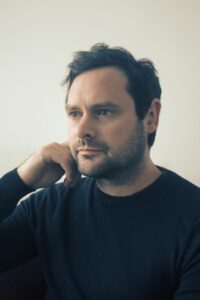
Eoghan Smith is the author of The Failing Heart (Dedalus 2018). His second novel, A Provincial Death is out now with Dedalus.








